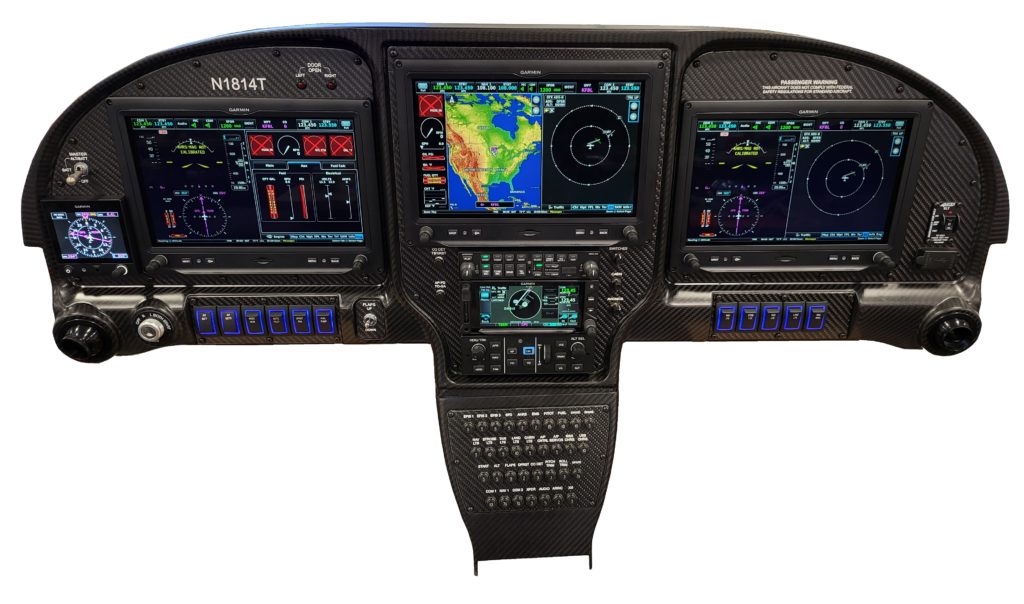Full Build
We offer a finished instrument panel starting with the initial design, leading into fabrication, paint and labels, and complete wiring for the avionics, switches, circuit breakers, and ancillary items.
Scope of Work
We are happy to accommodate your panel building needs. We are often asked, “You guys are building my panel, but what do I need to do?”
This is a valid question and it is important for you, the customer, to have a clear understanding of of what we do and what you will have to do to complete your installation. In the case of a full panel build, we complete the interconnect wiring between the units in the panel and any remote avionics (transponders, remote coms, autopilot servos, magnetometer etc). We also complete the power wiring to the “load center”, which can be a fuse or circuit breaker panel or Vertical Power box. We wire from the switches in the panel to the load center.
When you receive your panel you will need to terminate the black ground wires to a suitable ground bus. You will need to fabricate and install your antenna leads. Items mounted out in the airframe such as cockpit and external lighting, pitot heat, etc. will need their wiring connected to the panel switches or load center as required. An exception here is the engine monitoring system (EMS) wiring for the engine sensors. For those we provide enough wire from the EMS unit connector to run through the firewall to the engine sensors.
You will also need to provide electrical power from the battery or batteries, and the alternator(s) to the load center. Design and fabrication of your electrical power system will be up to you. A couple of great sources of information are: “The AeroElectric Connection” by Bob Nuckolls and “Aircraft Wiring Guide” by Marc Ausman. Both of these works provide good, practical information on the design of aircraft electrical systems. You will need to decide this part early so you can make sure the panel design tech puts the right switches in the panel. For example, just adding a second alternator can trigger a panel re-cut to add the second control switch. This can be very costly if the panel has been painted and the labeling applied.

